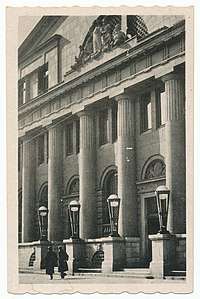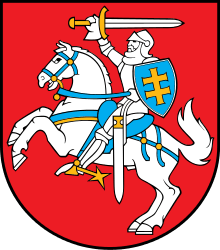Bank of Lithuania
|
Bank of Lithuania headquarters in Gediminas Avenue, built by the order of Józef Montwiłł in 1889–1891 | |
| Headquarters | Vilnius |
|---|---|
| Established | 27 September 1922 |
| Chairman | Vitas Vasiliauskas |
| Central bank of | Lithuania |
| Succeeded by | European Central Bank (2015)1 |
| Website | (in Lithuanian) (in English) The Bank of Lithuania |
| 1 The Bank of Lithuania still exists but many functions have been taken over by the ECB. | |
The Bank of Lithuania (Lithuanian: Lietuvos Bankas) is the central bank of the Republic of Lithuania. The Bank of Lithuania is a member of the European System of Central Banks. The chairman of the bank is Vitas Vasiliauskas. Until 2015, the Bank of Lithuania was responsible for issuing the former Lithuanian currency, the litas.
Primary functions
According to the Bank's official website, the Bank of Lithuania performs these primary functions:
- maintaining price stability.
- formulating and implementing the monetary policy.
- acting as an agent of the State Treasury.
Management and structure

The Bank is governed by a board consisting of a chairperson, two deputy chairpersons and two members.
According to The Bank of Lithuania official website, it is managed by Supervision Service; ten departments: Economics, Statistics, Market Operations, International Relations, Payment Systems, Cash, Accounting, Information Technology, General Services and Security; six autonomous divisions (Internal Audit, Legal, Organisation and Personnel, General and Public Relations, Risk Management), and Bank of Lithuania Branches in Kaunas and Klaipėda.
See also
External links
- (in Lithuanian) (in English) The Bank of Lithuania
Coordinates: 54°41′10″N 25°17′00″E / 54.68611°N 25.28333°E
